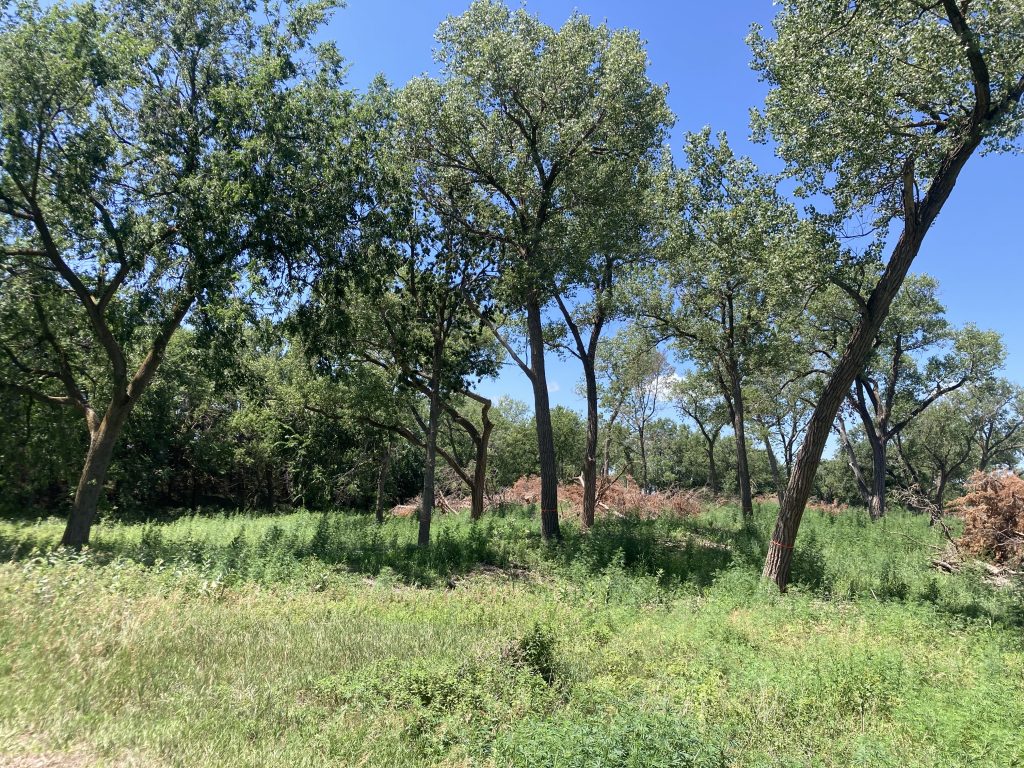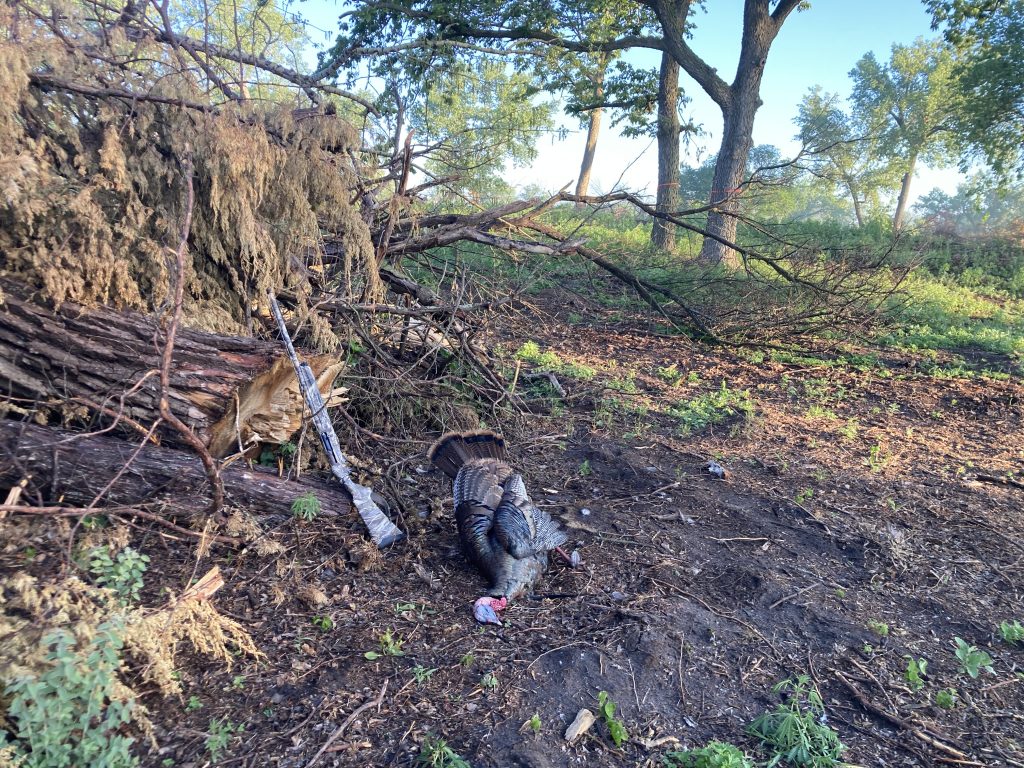NWTF Nebraska Funds Riparian Habitat Management Project
EDGEFIELD, S.C. — The Nebraska NWTF State Chapter and the Nebraska Game and Parks Commission recently completed a conservation project on the Bassway Strip Wildlife Management Area that will benefit wild turkeys and promote overall biological diversity. The primary objective of this project was to remove Eastern red cedar and other undesirable tree species from over 16 acres of the WMA, stimulating native grasses and forbs and allowing desirable cottonwoods to thrive along the Platte River within the WMA.
Although Eastern red cedars are a native species, they have become overgrown and invasive after years of fire suppression. Dense stands of cedar displace other native plant species that wildlife depend upon.
“By removing Eastern red cedars and other invasive woody species from the midstory, we are creating quality habitat and allowing sunlight to reach the ground, which restores native grasses and forbs,” said Annie Farrell, NWTF district biologist. “This work improves nesting, brooding and roosting habitat for wild turkeys by increasing plant diversity, which supports more insects and produces more seeds for turkeys and their poults.”
Removing Eastern red cedar from the landscape restores native cottonwood ecosystems, benefitting riparian habitat and a wide variety of wildlife species, including wild turkeys, waterfowl, deer and endangered and threatened species like the least tern, piping plovers and the whooping crane, all of which depend on the riparian ecosystem along the Platte River.

“The cedar removal project at Bassway Strip opened areas that were previously underutilized by turkeys due to dense woody cover,” said Aden Shorney, NGPC wildlife biologist. “Removing cedars and other deciduous trees created a savannah-type system that will be safer and easier to use prescribed fire.”
To date, the Bassway Strip habitat project has consisted of clear-cutting Eastern red cedars, prescribed fire operations and annual chemical treatment for noxious weeds and the setback of invasive species. The results have paid off.
“I shot my first Nebraska public land turkey there [at the] end of May,” Shorney said. “Since this project’s completion in February, the disturbed soil has produced amazing brood habitat. Broadleaf plants like wild marijuana, wild four o’clock, ragweeds, sunflower, kosha and more are shading open soil for this year's poults. Currently, turkeys and deer can be seen in the project area, resting and munching on the nutritious forbs. I’m so happy to see turkeys utilize this WMA and thankful to NWTF for the partnership. I’m looking forward to working with NWTF in the future on other WMA projects.”

About the National Wild Turkey Federation
Since 1973, the National Wild Turkey Federation has invested over half a billion dollars into wildlife conservation and has positively impacted over 24 million acres of critical wildlife habitat. The NWTF has also invested over $10 million into wild turkey research to guide the management of the wild turkey population and to ensure sustainable populations into perpetuity. The organization continues to deliver its mission by working across boundaries on a landscape scale through its Four Shared Values: clean and abundant water, healthy forests and wildlife habitat, resilient communities, and robust recreational opportunities. With the help of its dedicated members, partners and staff, the NWTF continues its work to provide Healthy Habitats. and Healthy Harvests. for future generations.
